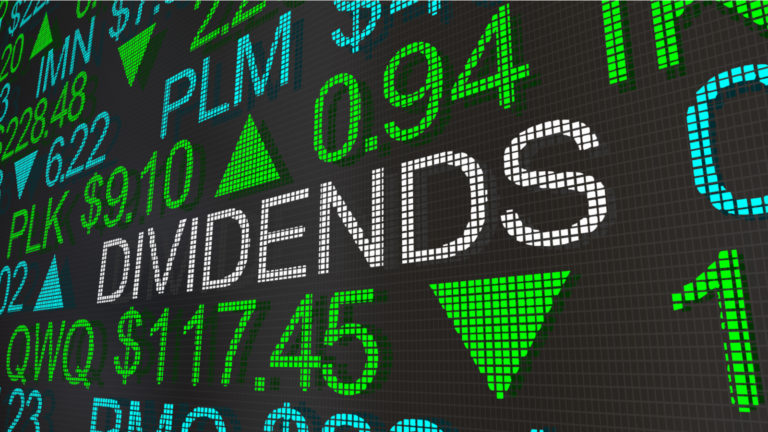In investing, where uncertainty often reigns high, dividend kings are the beacons of income stability and growth. Among them, three companies hold enduring leads. These titans build reliable income streams through dividends with considerable resilience in navigating turbulent macro-environments. They offer decades of constant dividend growth and solid financial fundamentals with market dominance.
The first one, with its illustrious history spanning over six decades of consecutive dividend boosts, sets the standard for reliability in dividend investing. The second one is a stalwart in the consumer staples sector. The company has a track record of dividend growth extending over six decades. Meanwhile, the third one, with its diversified portfolio and a decade-long streak of dividend growth. The company emerges as a solid contender in the pharmaceutical landscape.
Beyond rock-solid dividend histories, these companies focus on sales growth, operational edge and strategic leads. Read more to become a braveheart of dividend investing by learning the fundamentals behind the lead of these dividend kings and exploring the high opportunities for both income stability and growth in a portfolio.
Johnson & Johnson (JNJ)

Johnson & Johnson (NYSE:JNJ) has a forward dividend yield of 3%, based on an annual payout of $4.76. The dividend yield has a 5-year growth rate of 5.8%. Additionally, there has been back-to-back payment growth for 61 years. Johnson & Johnson delivered solid top-line growth in Q4 and 2023. Specifically, in Q4, the company derived a 7.3% year-over-year (YoY) increase to $21.4 billion. Similarly, a 6.5% YoY increase in sales will reach $85.2 billion for the year. This suggests considerable progressiveness in the company’s top line.
Similarly, the company’s YoY operational sales growth was 7.2% for Q4 and 7.4% for 2023. This indicates constant performance and growing market demand for the company’s products. Here, excluding the COVID-19 vaccine impact, YoY operational growth hit 10.9% for Q4 and 9.0% for 2023. Hence, this suggests the company’s strength across its diverse portfolio.
Despite adversities like a special one-time charge in Q1, the company has attained solid bottom-line growth. In detail, Q4 EPS was boosted by 39.3% YoY, and adjusted EPS increased by 11.7% YoY. Similarly, for 2023, adjusted EPS grew by 11.1% YoY. In short, the company can derive profitability even in the presence of external pressures. Similarly, Johnson & Johnson’s focus on the operational edge can be observed in the improvement in adjusted operational EPS of 10.8% for 2023.
Looking forward, the company reaffirmed its guidance for 2024, projecting YoY operational sales growth of 5.0%–6.0%. Similarly, the company may yield an adjusted operational EPS of $10.55–$10.75, reflecting a growth of 7.4% YoY at the midpoint. Overall, the company has solid performance and can lead health sector advancements in the coming years.
Procter & Gamble (PG)

Procter & Gamble (NYSE:PG) has a dividend yield of 2.4% (forward). The long-term (5-year) growth rate of nearly 6% is supported by a dividend growth of 67 years. Procter & Gamble delivered solid organic sales growth based on aggressive demand.
For instance, in Q2 2024, Procter & Gamble had a 4% boost in organic sales, excluding the impacts of forex and acquisitions/divestitures. The growth suggests the company can derive revenue from its core operations and portfolio. This growth reflects prolonged demand for Procter & Gamble’s products across multiple categories and geographic regions. In short, the constant growth in organic sales over multiple quarters indicates the sharpness of Procter & Gamble’s business strategies and market lead.
In detail, vital markets such as North America, Europe and Latin America delivered solid organic sales growth in Q2. Despite adversities in certain regions, Procter & Gamble’s market performance remained solid, leading to consolidated growth and market share expansion.
Moreover, Procter & Gamble has delivered solid operational productivity and cash flow generation. This reflects its efficient use of resources and focus on valuation boosts. For instance, adjusted free cash flow productivity was 95% in Q2 2024. Furthermore, the company returned $3.3 billion of cash to shareholders through dividends and share repurchases.
At the bottom line, the company can deliver solid earnings growth despite external adversities. This suggests its strategic focus on productivity improvements, cost management and pricing strategies, with its core EPS boosting by 16% in Q2. Therefore, in this direction, the core operating margin expanded by 4% compared to Q2 2023.
AbbVie (ABBV)

With a forward dividend yield of 3.5%, AbbVie (NYSE:ABBV) has a 5-year growth rate of 8.7% and a decade-long history of back-to-back dividend growth. AbbVie has a diversified portfolio across multiple therapeutic areas, including immunology, oncology, neuroscience and aesthetics. This diversification minimizes the risks of patent expirations and high competition in any market segment.
Despite a decrease in Humira revenues (due to biosimilar competition), AbbVie has other immunology products, like Skyrizi and Rinvoq, with high top-line growth potency. The oncology portfolio had a mixed performance. Specifically, revenue for a few oncology products declined while others, like Venclexta, grew considerably. Similarly, AbbVie’s neuroscience portfolio grows based on Vraylar and the oral CGRP inhibitors Ubrelvy and Qulipta.
Looking forward, newer products, such as Skyrizi, Rinvoq, Vraylar, Ubrelvy, Qulipta and Botox Cosmetic, hold massive potency for market lead. For instance, Skyrizi and Rinvoq attained considerable top-line growth. Here, Skyrizi’s sales boosted by 51.6% and Rinvoq’s by 62.8% on an operational basis in Q4. Newer indications and expanding geographical reach may further lead to top-line growth for these products.
Moreover, the solid performance of Botox Cosmetic in the U.S. market suggests AbbVie’s capability to maintain leads in aesthetics even in high competition. AbbVie continues channeling resources heavily into research to expand its pipeline and bring advanced therapies.
Finally, there are expectations for a return to operational sales growth based on the ex-Humira growth platform and contributions from recent acquisitions. Hence, the long-term sales outlook suggests high single-digit compound growth through 2029.
On the date of publication, Yiannis Zourmpanos did not hold (either directly or indirectly) any positions in the securities mentioned in this article. The opinions expressed in this article are those of the writer, subject to the InvestorPlace.com Publishing Guidelines.
